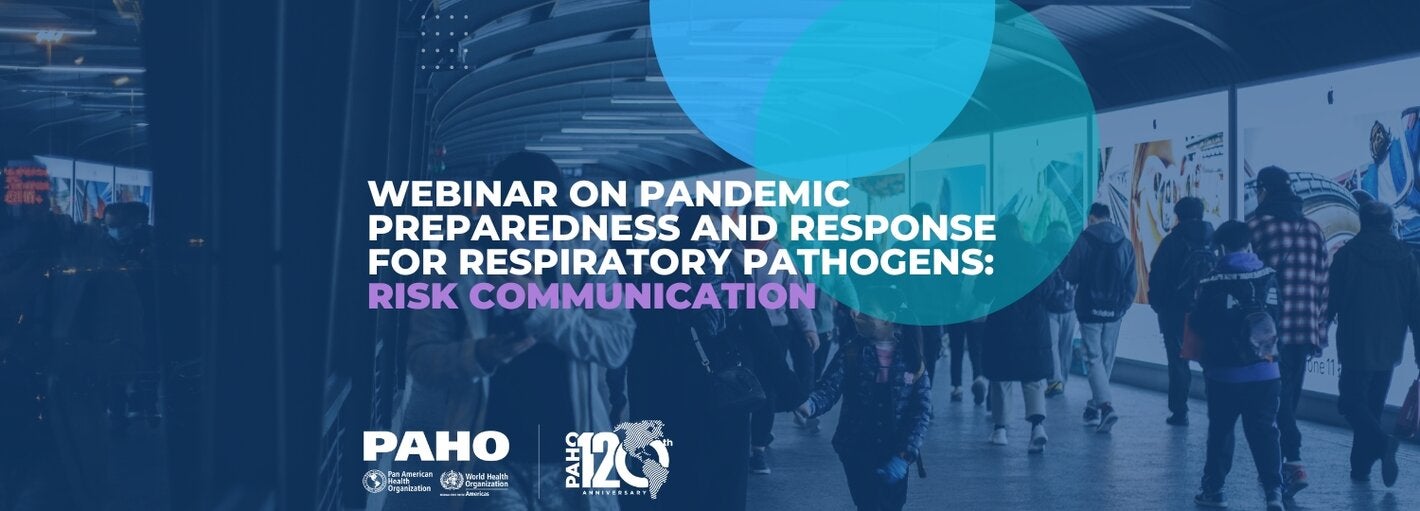
Recently, the Pan American Health Organization (PAHO) has highlighted in its vision for the next 5 years the importance of applying the lessons learned from the COVID-19 pandemic in the Region of the Americas. In this sense, various analyzes of the Member States on the response to the pandemic have documented and highlighted risk communication and community participation (CRPC), as one of the capacities to be strengthened for the management of future health emergencies, always under the framework of the International Health Regulations (IHR).
The current COVID-19 pandemic has emphasized the importance of raising awareness among the actors involved in integrated planning, to promote preparedness and response to the threats caused by respiratory viruses in a multi-sectoral context. The CRPC is vital to this process, since it strengthens the role of communities and analyzes sociocultural challenges, the nature of risk groups and vulnerable populations, to design communication activities that contribute to stopping disease transmission and mitigating the effects Brought in for health threats.
The infectious Hazard Management Unit of the Health Emergencies Department (PHE/IHM), together with the Communication Team, of the Department of Health Emergencies of the PAHO regional headquarters in Washington D.C., convened a cycle of 3 webinars, in which three dimensions of the CRPC were addressed: 1) the importance of communication for outbreak preparations; 2) internal communication and the importance of coordination; and 3) public communication to promote prevention behaviors.
PROGRAM
Day 1: General elements of risk communication for pandemic preparedness.
Introduction to Risk Communication for preparing for outbreaks of influenza and other respiratory viruses. By: Ljubica Latinovic, Technical Officer for translation of knowledge, Prevention Unit and preparation for pandemics and epidemics, Health Emergencies Program, WHO.
Practical elements of risk communication.
By: Sara Ferraz, International PAHO Consultant, Influenza Team, PHE/IHM.
Day 2: The importance of internal communication for the coordination of an emergency.
Internal Communication: The importance of coordination in pandemic preparedness (C10.1)
By: Sara Ferraz.
Importance of internal coordination for effective risk communication.
By: Suzanne Kerba, Consultant of Risk Communication team, Health Emergencies Programme, WHO.
External Communication – Teamwork by country II.
Sara Ferraz
Day 3: External communication: from public communication to the importance of behavioral data.
External Communication – SOCO and other elements. By: Sara Ferraz.
Behavioral data and its connection to the design of public health messages: WHO and experience from Europe.
Presentation 1: By Nina Gobat, Technical Officer, Community Preparedness and Resilience Unit, Health Emergencies Programme, WHO.
Presentation 2: By Martha Scherzer, Senior Consultant, Europe Regional Office, WHO.
Exercise – Developing the SOCO and communicating better with the community. - Sara Ferraz
